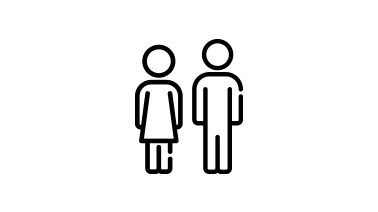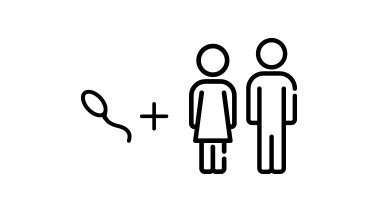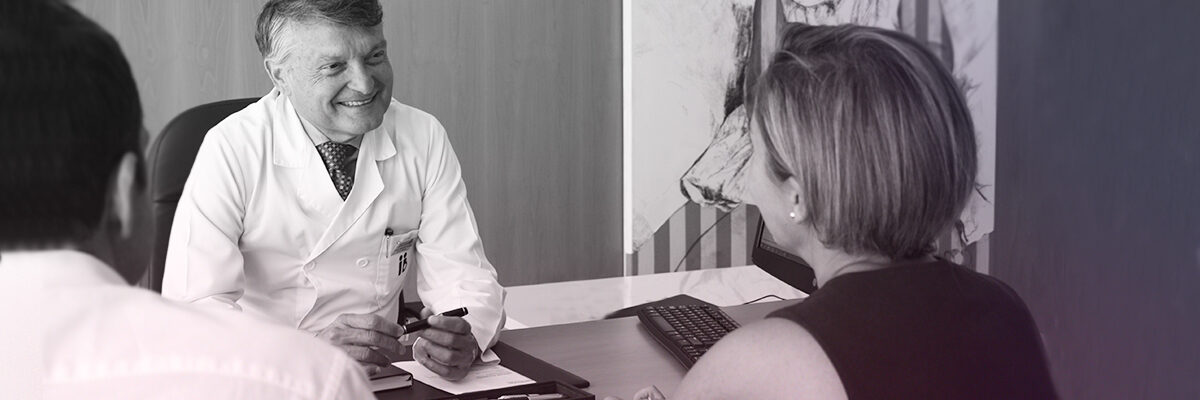Artificial Insemination
Artificial insemination is an assisted reproduction technique to achieve pregnancy, that is both simple and painless, and is fully performed on an outpatient basis. Your everyday life will remain exactly the same during treatment and medical examinations
What is artificial insemination?
Artificial insemination is an assisted reproduction technique whereby sperm is inserted in the woman’s uterus. Intrauterine insemination is a procedure widely used for treating several reproductive disorders. It should not be mistaken with In Vitro Fertilisation (IVF) as insemination aims to let fertilisation take place naturally within the fallopian tubes. The patient does not have to rest or interrupt her daily routine afterwards.
What kinds of artificial insemination are there?


Artificial Insemination with Donor sperm
In the case of women who have a male partner:
- When significant alterations in sperm quality occur.
- When treatments with other assisted reproduction techniques (In Vitro fertilization by intracytoplasmic sperm injection [ICSI]) have previously failed due to a very severe male factor.
- When the male suffers from genetic diseases that other treatments either have previously failed to address, such as preimplantation genetic diagnosis (PGD), or were not consented to by patients for personal reasons.
- In cases of sexually transmitted diseases where sperm washing tests have been repeatedly positive for infectious diseases such as Hepatitis B, Hepatitis C, syphilis and AIDS.
n the case of women who do not have a male partner (single women or women who have a female partner).
What examinations need to be performed before artificial insemination is advised?
We begin by collecting and studying our patients’ personal and family Medical History data.
In the case of female patients we perform:
- A complete gynaecological examination.
- Tests to estimate her Ovarian Reserve: A vaginal ultrasound to count the number of follicles produced during the first few days of the ovarian cycle (day 2 or 3 from the beginning of the menstrual period).
- Average counts of 6 to 12 follicles are regarded as normal at the beginning of the cycle.
- The number of follicles declines as women physiologically age.
- Measurements of hormones related to ovarian function (AMH, FSH, LH, E2) and other hormones (e.g. thyroid hormones).
- Tests to measure permeability of the fallopian tubes (not applicable to every case): Hysterosalpingography (HSG) or Hysterosonography (vaginal ultrasound whereby physiological serum is inserted into the uterus).
- Other: weight, height and blood pressure measurements.
In the case of male patients:
- A complete spermiogram
What arrangements are made for insemination?
Usually, the first step is to perform ovarian stimulation on day 3 of the menstrual period. Hormones that stimulate ovarian follicle growth are administered, always with an individualized protocol for each case. Stimulation is monitored through performance of 3 ultrasound scans in a period of 8-10 days until an adequate ovarian response is achieved.
Subsequently, ovulation is boosted by injecting hCG hormones when ultrasounds confirm the existence of a follicle of 18 to 20 milimetres of size. A date and time for insemination is agreed on (normally 36 hours after administering hCG). Previously, about 2-3 hours earlier, the husband or male partner must have provided a sperm sample that will be capacitated in the laboratory to enhance its quality. In those cases of insemination with donor sperm, samples are thawed for women according to blood type and Rh, as well as each woman’s physical characteristics (phenotype).
It is important to underline that donation in Spain is anonymous and therefore the patient/s cannot select their donors under any circumstances. The treatment is short in length, about 12 to 14 days from the beginning of ovarian stimulation.
It is a simple technique that is performed at the Outpatient Care Centre. It does not require anaesthesia, analgesia or taking anxiolytics, and it is not painful.
It is practically the same as any routine gynaecological examination:
- Placing the speculum to view the neck of the uterus. Clearing the cervical mucus.
- Inserting the cannula filled with sperm in a specific spot through the external cervical os in the neck of the uterus.
- Inseminating with capacitated sperm.
- The patient lays down for a few minutes (10-15).
- Urine pregnancy test after two weeks if the woman has not got her menstrual period during that time.
What are the positive pregnancy rates? What are the chances?
Statistically, the positive pregnancy rates after insemination with the partner’s sperm are 15%. Rates for insemination with donor sperm is slightly higher: 20-25%. This means a patient could accumulate a 45% of probability in 3 consecutive cycles in case of inseminations with the partner’s sperm and even higher in case of inseminations with donor sperm. At this point, it must be underlined that it is essential to perform an adequate examination and diagnosis so as to select those patients who best qualify for maximum probability.
| CUMULATIVE POSITIVE PREGNANCY TEST 3 cycles in the case of inseminations with husband’s or partner’s sperm | 45% |
